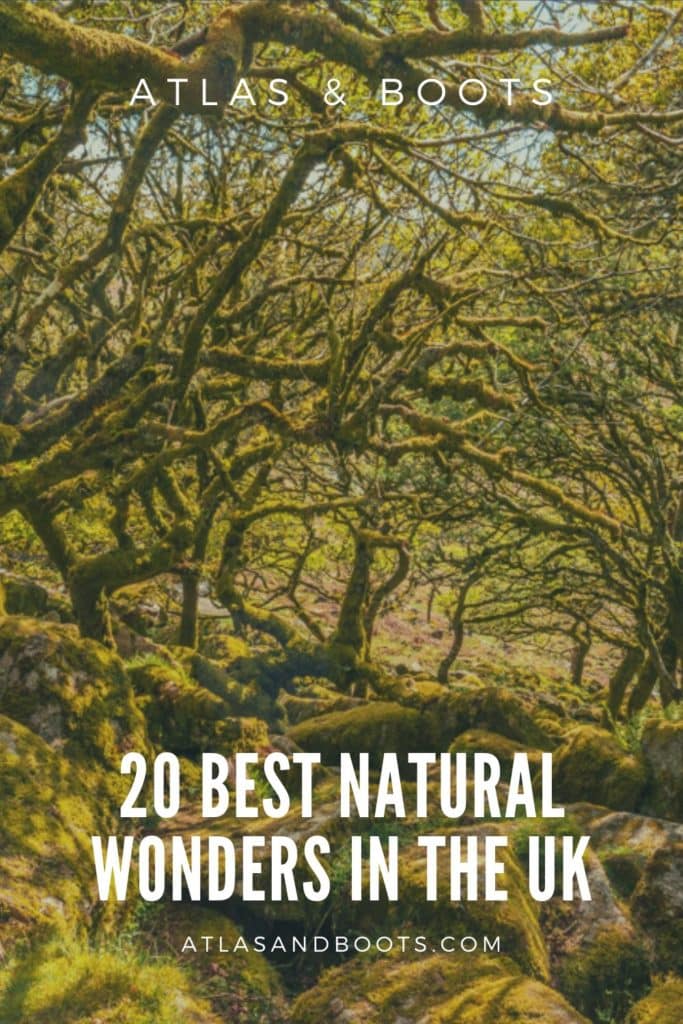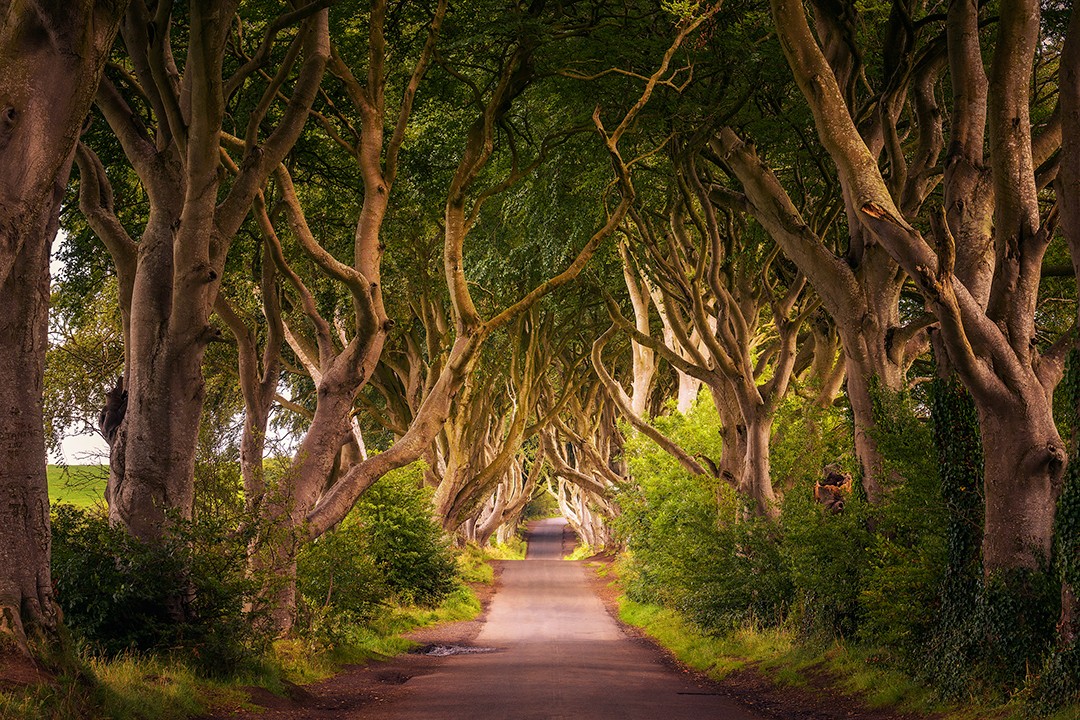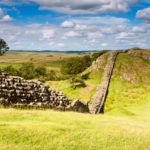From plunging gorges to fairytale woods, we share a handpicked list of the best natural wonders in the UK
We’d been back in Britain for a mere two weeks when Peter told me he was heading to Dartmoor to walk the Two Moors Way. Our recent trip through Europe had mainly stopped in cities and clearly hadn’t satisfied his need to be outdoors. Peter grew up by the coast, and swimming and hiking were formative parts of his childhood.
I envy him in many ways. I grew up in inner city London and can count the number of times I saw the sea: a school trip to Walton-on-the-Naze, another to Bude in Cornwall, a few to Southend-on-Sea. I never went hiking. I certainly never went glamping, which I now know is a wonderful way to get closer to nature; to explore beautiful, natural parts of the UK while still enjoying a luxury stay. These pleasures were (and still are) alien to my family – and indeed my broader community.
This saddens me because it deprives us not only of nature’s benefits – better mental health, physical health, wellbeing and development – but also of Britain’s beauty. This is a land filled with natural wonders and we should all make an effort to see it. To help you decide where to go, we’ve put together a list of the best natural wonders in the country.
Best natural wonders in the UK
With so much to choose from, we asked the experts at Unique Hideaways to help us curate this list. Below, you will find plunging gorges, dramatic sea stacks and eerie fairytale woods grouped into England, Northern Ireland, Scotland and Wales.
Durdle Door & Lulworth Cove
Location: Dorset, England
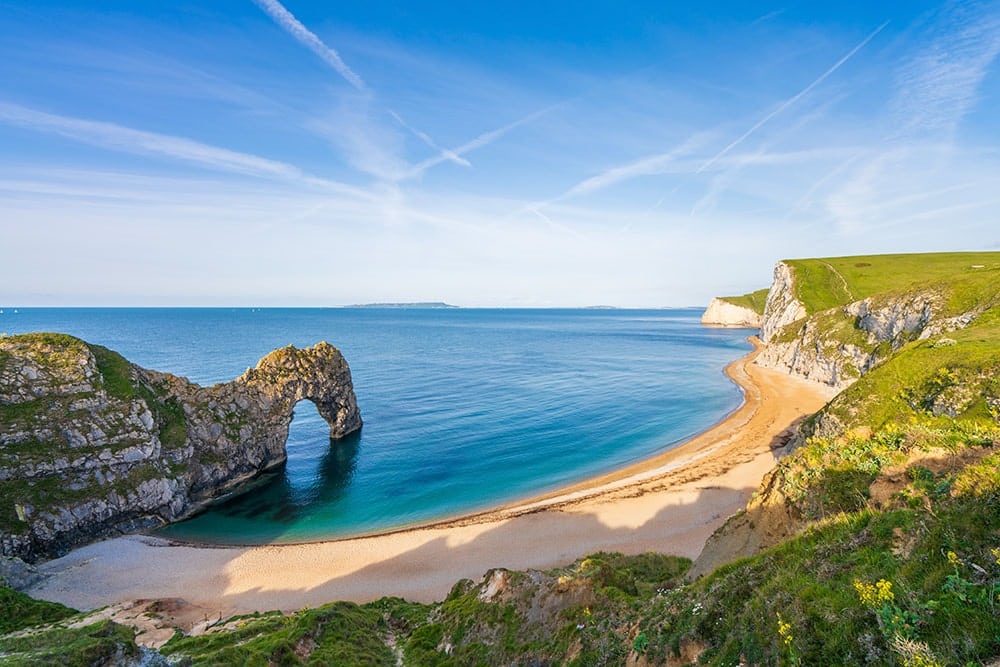
Durdle Door is a natural limestone arch on the Jurassic Coast near Lulworth in Dorset. The arch was formed by eroding waves that forged a hole through the middle of the rock. The name Durdle comes from the old English word ‘thirl’, which means to pierce, bore or drill.
The Jurassic Coast itself is one of the most impressive natural wonders in the UK. This 95-mile stretch from Orcombe Point in East Devon to Old Harry Rocks in Dorset is of such geological importance, it was designated England’s first Natural World Heritage Site by UNESCO in 2001.
Find out more about Durdle Door and book a stay with the Dorset hideaways collection
Wistman’s Wood
Location: Dartmoor, Devon, England
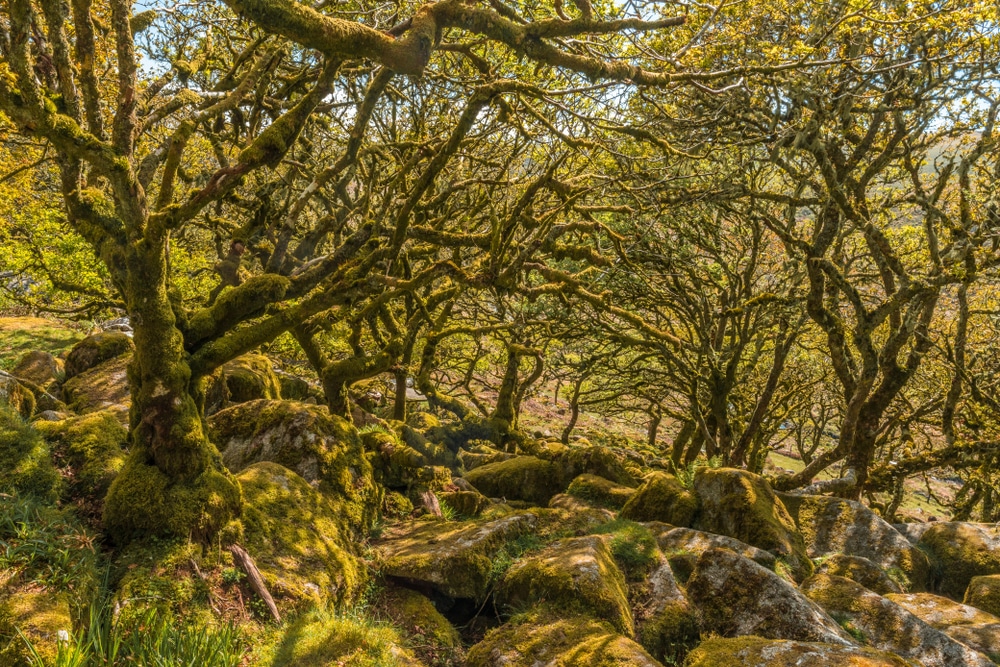
Wistman’s Wood is one of three remote high-altitude oakwoods on Dartmoor in Devon. The ancient forest has largely been left to grow wild, partly due to the treacherous, rocky ground at the base of the trees which makes it difficult to navigate.
Hulking moss-covered boulders, twisted brambles and gnarled trees form a fairytale landscape that has inspired tales of druids and ghosts. No evidence has been found, but it’s not hard to see why Wistman’s Wood evokes such myth and mystery.
Find out more about Wistman’s Wood and book a stay with the Devon hideaways collection
Cheddar Gorge
Location: Mendip Hills, Somerset, England
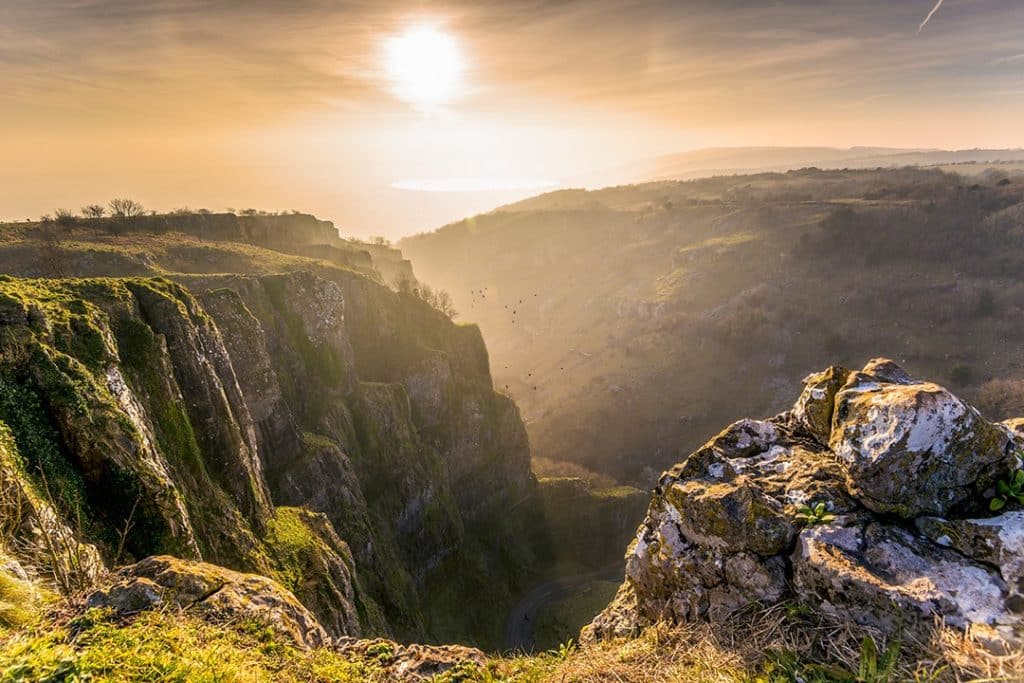
Cheddar Gorge, England’s largest gorge, started forming a million years ago during the last Ice Age when water from melting glaciers formed a river which carved into the limestone rock, creating the steep cliffs we see today.
The gorge plunges 137m at its deepest and runs three miles long. Laced with weathered crags and pinnacles, it is one of the most spectacular natural wonders in the UK.
The gorge is also the site of the Cheddar show caves where Cheddar Man, Britain’s oldest complete human skeleton, estimated to be over 9,000 years old, was found in 1903.
Find out more about Cheddar Gorge
Seven Sisters
Location: South Downs, England
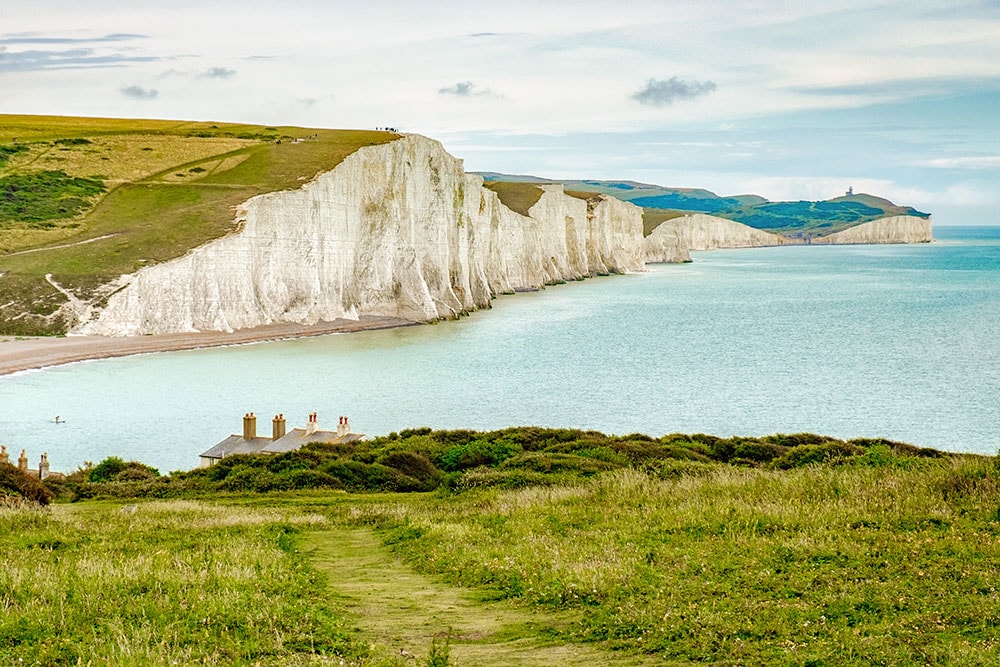
The chalk cliffs of Seven Sisters by the English Channel have been used as a location in several films including Robin Hood: Prince of Thieves and Atonement.
They are often used as a stand-in for the more famous White Cliffs of Dover as they are relatively free from modern development and are allowed to erode naturally, which maintains their bright white colour.
The White Cliffs of Dover in contrast are protected due to the port and are therefore greening as a result of increasing vegetation.
Find out more about the Seven Sisters and book a stay with the Sussex hideaways collection
Malham Cove
Location: Malham, North Yorkshire, England
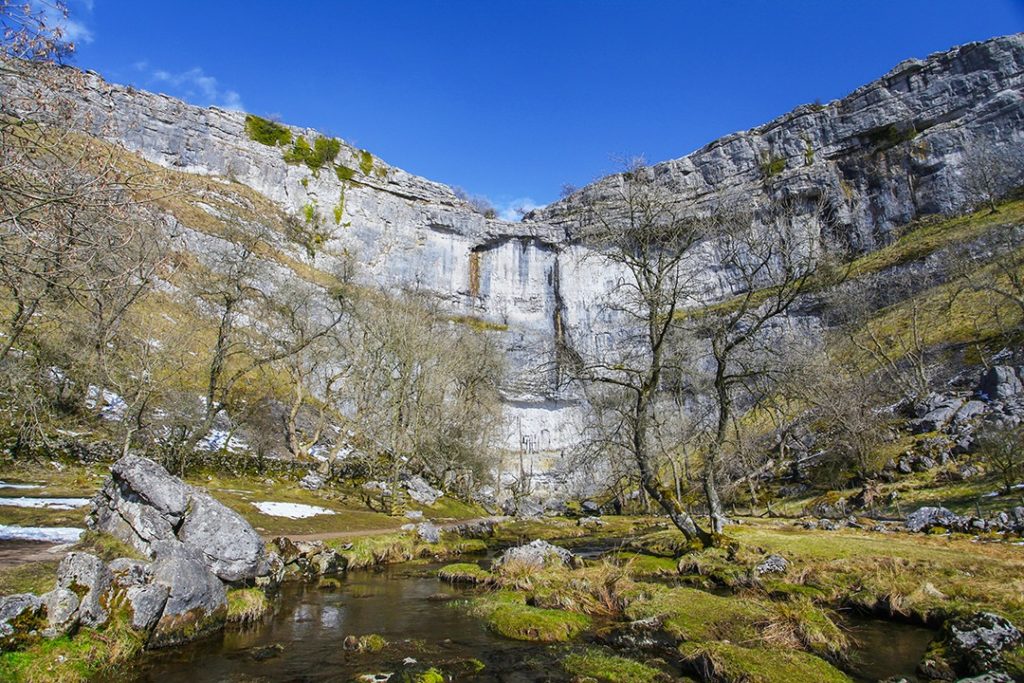
Malham Cove is a hulking rock amphitheatre lined with 80m-high vertical cliffs. Formed along the line of the Middle Craven Fault, it has eroded backwards from the line of the fault over millions of years.
Visitors can hike up the steep steps on the left-hand side of the cove to glimpse the extensive limestone pavement above the cliffs, used as a filming location in Harry Potter and the Deathly Hallows.
Find out more about Malham Cove
Gaping Gill
Location: Ingleborough, England
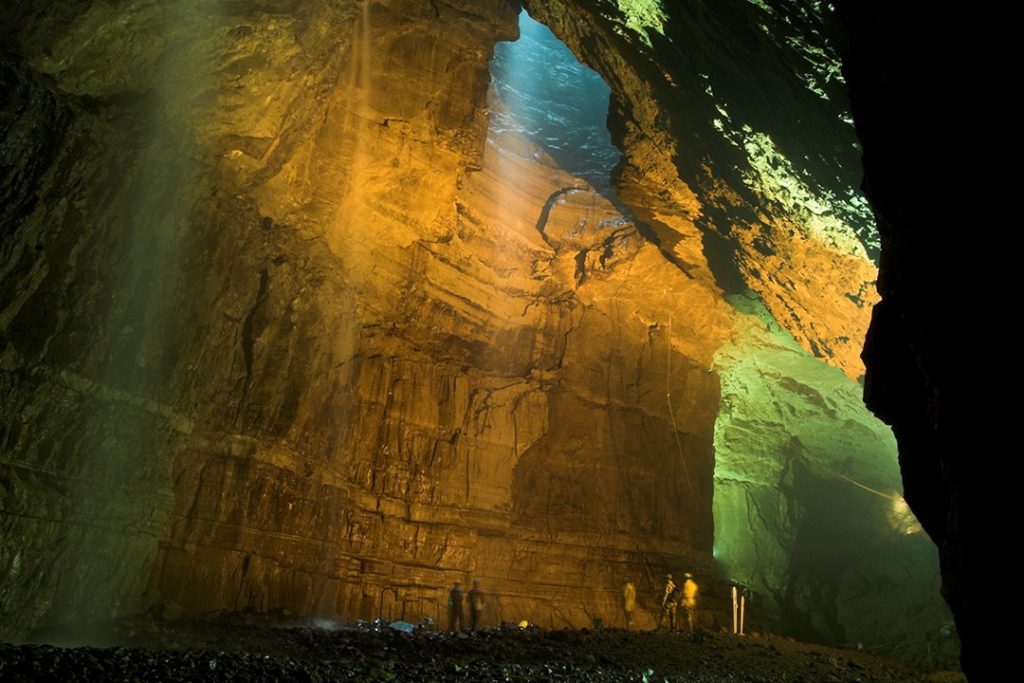
Gaping Gill is one of the largest known underground chambers in the UK. In fact, it was the deepest known until Titan in Derbyshire was discovered in 1999. Gaping Gill still retains the records for the highest unbroken waterfall in England and the largest underground chamber naturally open to the surface.
Fell Beck pours over a lip of rock above and crashes 100m to the floor of the cavern before draining through to Ingleborough Cave. So complex is the cave system, it wasn’t until 1983 that members of the Cave Diving Group made the connection between this cavern and Ingleborough Cave.
Find out more about Gaping Gill
The Needles
Location: Isle of Wight, England
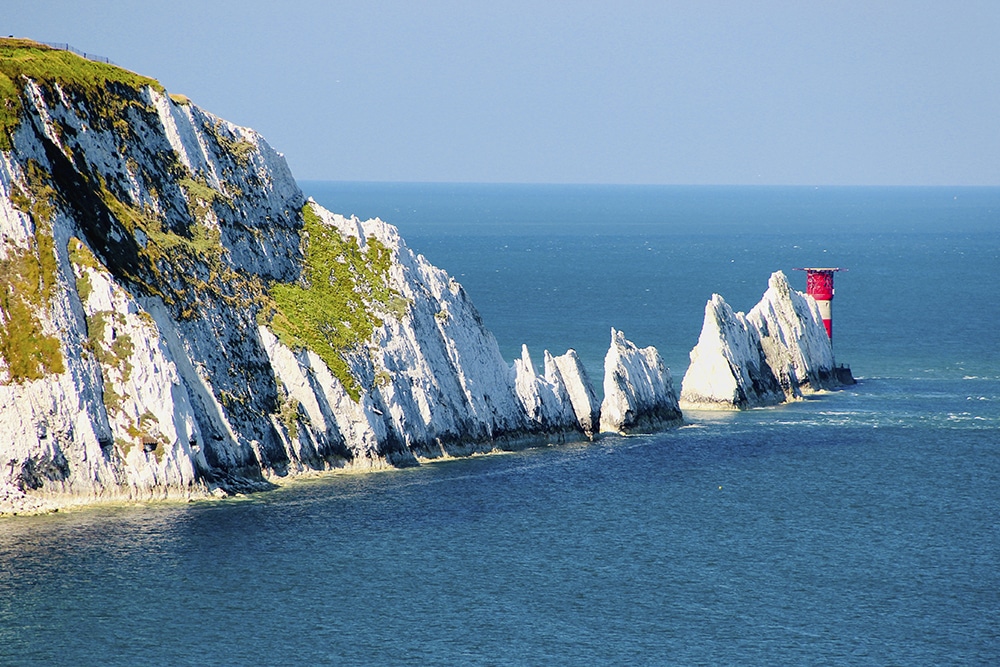
The Needles are three distinctive chalk stacks that rise 30m above the sea off the western extremity of the Isle of Wight. The formation takes its name from a fourth needle-shaped pillar called Lot’s Wife, which collapsed in a storm in 1764. The remaining rocks are not needle-shaped, but the name has endured.
This chalk ridge continues under the sea to Dorset’s Isle of Purbeck and is said to have once been connected to Old Harry Rocks 20 miles away.
Find out more about the Needles and book a stay with the Isle of Wight hideaways collection
Mother Shipton’s Cave and the Petrifying Well
Location: Knaresborough, England
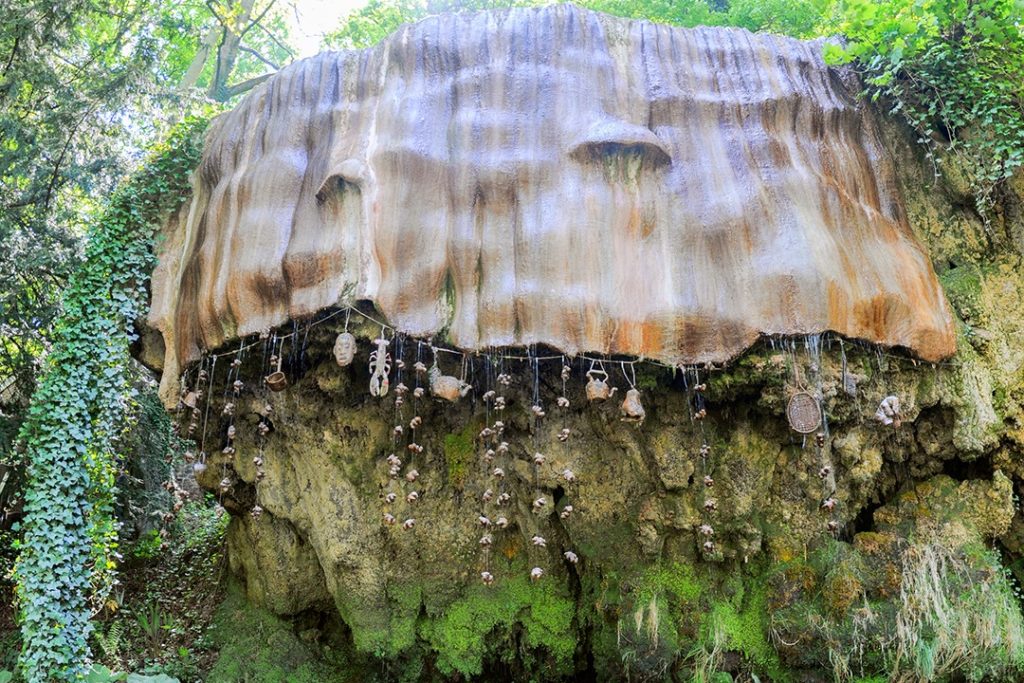
Mother Shipton’s Cave is named after soothsayer and prophetess Mother Shipton (c.1488-1561) who, according to legend, was born in the cave.
The main attraction of the site is the petrifying well which turns any object to ‘stone’ over a period of weeks or months. This was once believed to be magic or witchcraft, but it is an entirely natural process caused by evaporation and deposition in waters with unusually high mineral content.
Petrifying is not to be confused with petrification, the latter of which replaces the constituent molecules of the original object rather than merely covering it with molecules of stone or mineral.
Find out more about Mother Shipton
Isles of Scilly
Location: Off the southwestern tip of Cornwall, England
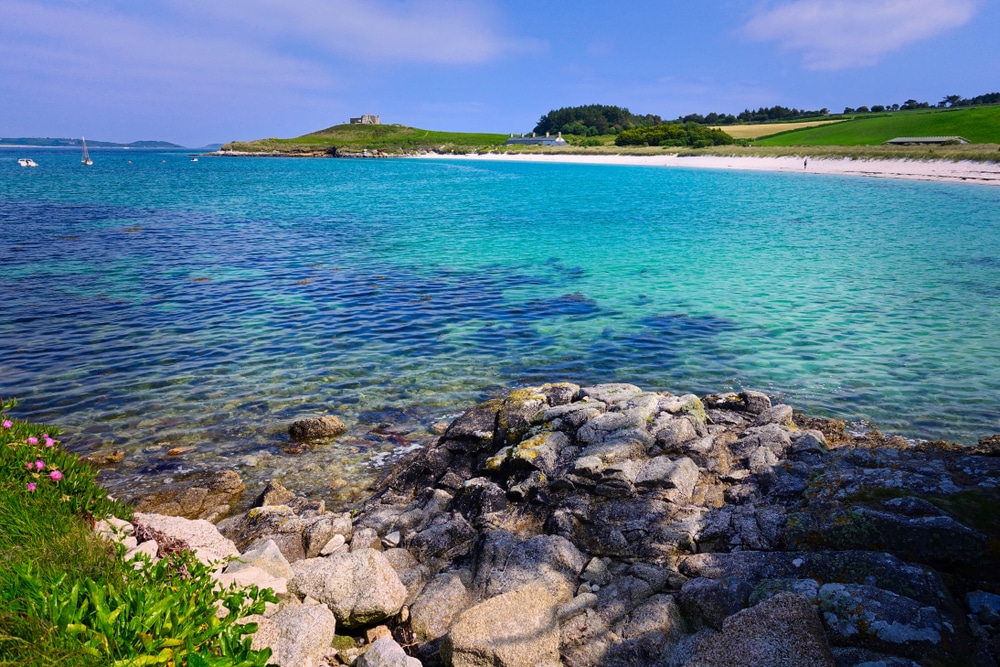
The Isles of Scilly off the coast of Cornwall are a world unto their own. More congruous with the vivid, calm waters of the Pacific than the weather-blown isles of Britain, this archipelago of around 140 islands remains unspoilt.
There is no glut of chain restaurants or multinational hotels here. Instead, it offers a quiet haven away from life on the mainland.
One of the islands, St Agnes, lies four miles south of Lizard Point on the mainland, making it the most southerly point in the UK. Pair it with a stay in Cornwall, which is quieter in the shoulder season (May to early Jun, Sep to early Oct).
Find out more about the Isles of Scilly or book a stay in Cornwall with the Cornwall hideaways collection
Giant’s Causeway
Location: County Antrim, Northern Ireland
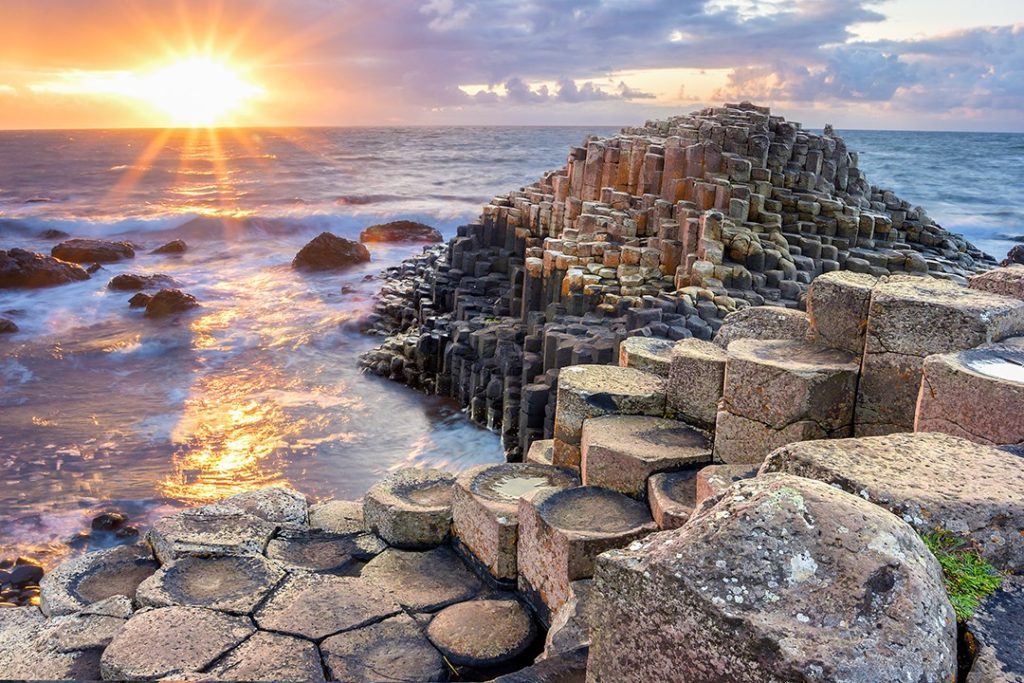
The Giant’s Causeway is an area of around 40,000 interlocking basalt columns. It was declared a UNESCO World Heritage Site in 1986 and is one of the most famous natural wonders in the UK.
The columns form stepping stones that lead from the cliff foot and disappear under the sea. The flat surfaces atop the columns are hexagonal, although some have four, five, seven or eight sides.
The tallest columns are around 12 metres and the solidified lava in the cliffs is 28 metres thick in places.
Find out more about the Giant’s Causeway
Dark Hedges
Location: County Antrim, Northern Ireland
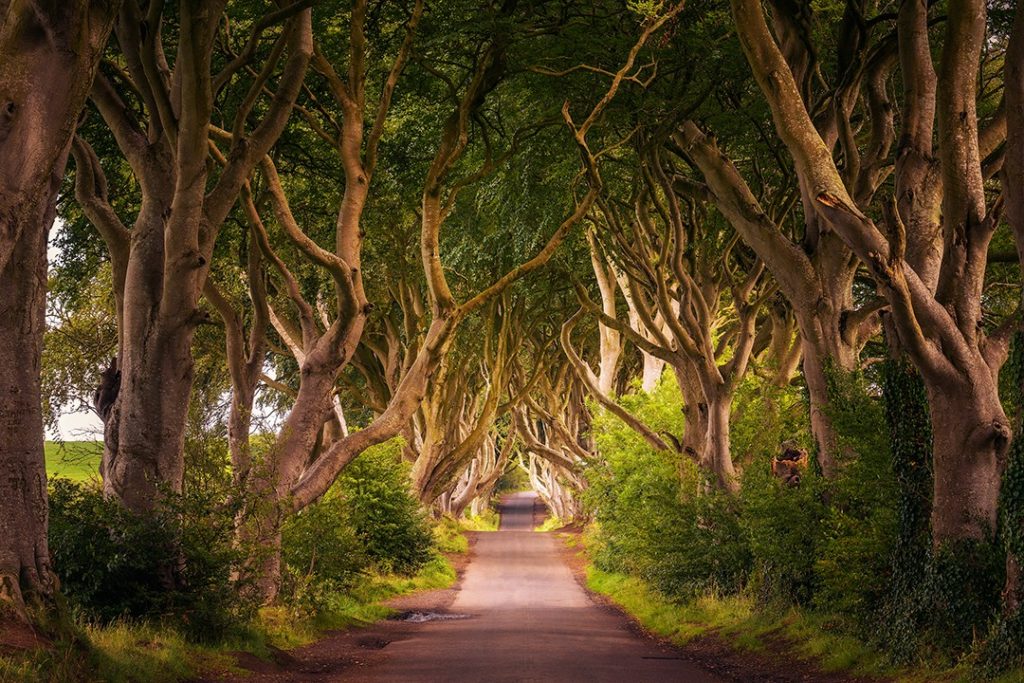
This imposing avenue of beech trees is not entirely natural; it was planted by the Stuart family in the eighteenth century. Nonetheless, today, it forms one of the most atmospheric wonders in the country.
The shadowy, gnarled trees have become one of Northern Ireland’s most photographed sights after doubling as the Kingsroad in Game of Thrones.
Find out more about the Dark Hedges
Fingal’s Cave
Location: Staffa, Inner Hebrides, Scotland
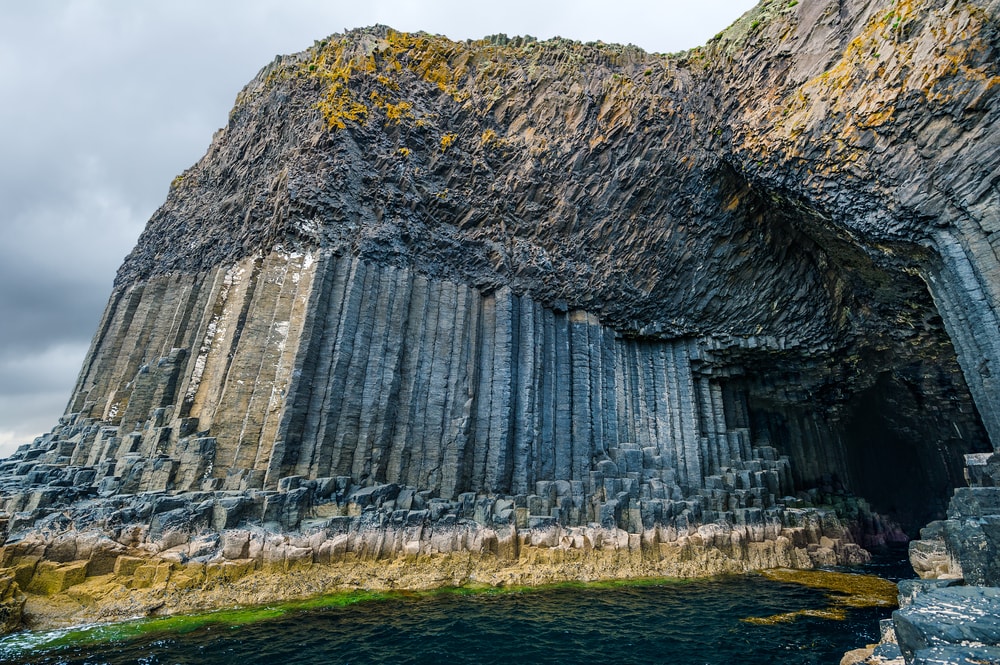
Fingal’s Cave is a sea cave on the uninhabited island of Staffa. Like the Giant’s Causeway in Northern Ireland, the cave is formed of hexagonally jointed basalt columns. Visitors can land on the island and walk into the cave via a causeway.
Staffa, which is Norse for ‘Pillar Island’, also has a sizeable puffin colony, north of the landing place.
German composer Felix Mendelssohn visited Staffa in 1829 and was inspired to compose his Hebrides Overture after hearing waves echoing in Fingal’s Cave.
Find out more about Fingal’s Cave
Duncansby Stacks
Location: Caithness, Scotland
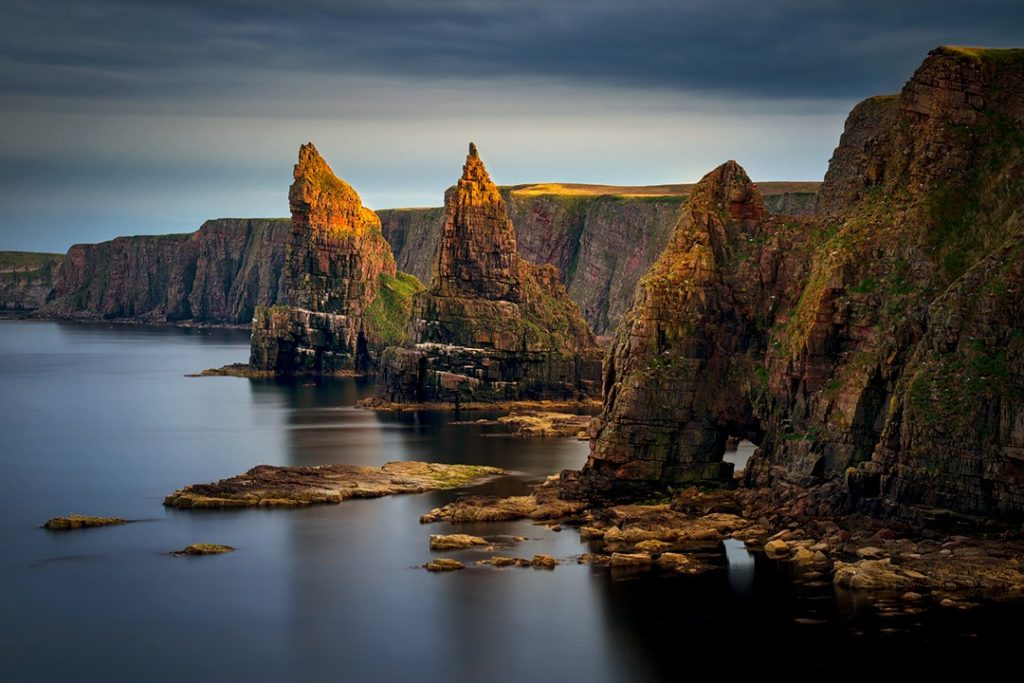
Duncansby Head is the most northeasterly point of the British mainland. Just off the coast lie two spectacular sea stacks known as the Duncansby Stacks. The Great Stack is over 60m high and rises above the summit of the adjacent cliff.
The site is relatively unknown, a result perhaps of its westerly neighbour, John o’ Groats, being widely cited as the most northeasterly point on the mainland. This loss of recognition is not mourned, however. While John o’ Groats is a commercial tourist attraction, Duncansby Head remains gloriously quiet.
Find out more about Duncansby Head
Suilven
Location: Sutherland, Scotland
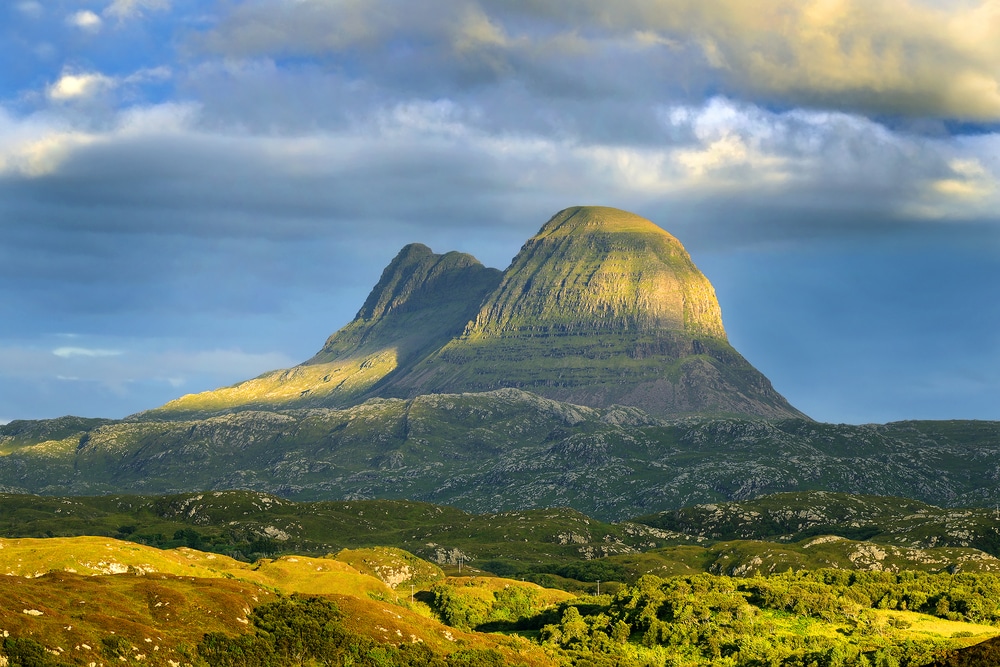
Suilven in Sutherland is only 731m high, but its distinctive profile makes it one of the finest peaks in the UK. Situated in a remote area in the west of Sutherland, it rises almost vertically from a wild landscape of moorland, bogs and lochans.
A steep-sided ridge over a mile long lines the peak. The highest point, known as Caisteal Liath (the Grey Castle in Scottish Gaelic), lies at the northwest end of this ridge. There are two other summits: Meall Meadhonach at the central point of the ridge and Meall Beag at the southeastern end.
Find out more about Sutherland
Old Man of Hoy
Location: Orkney, Scotland
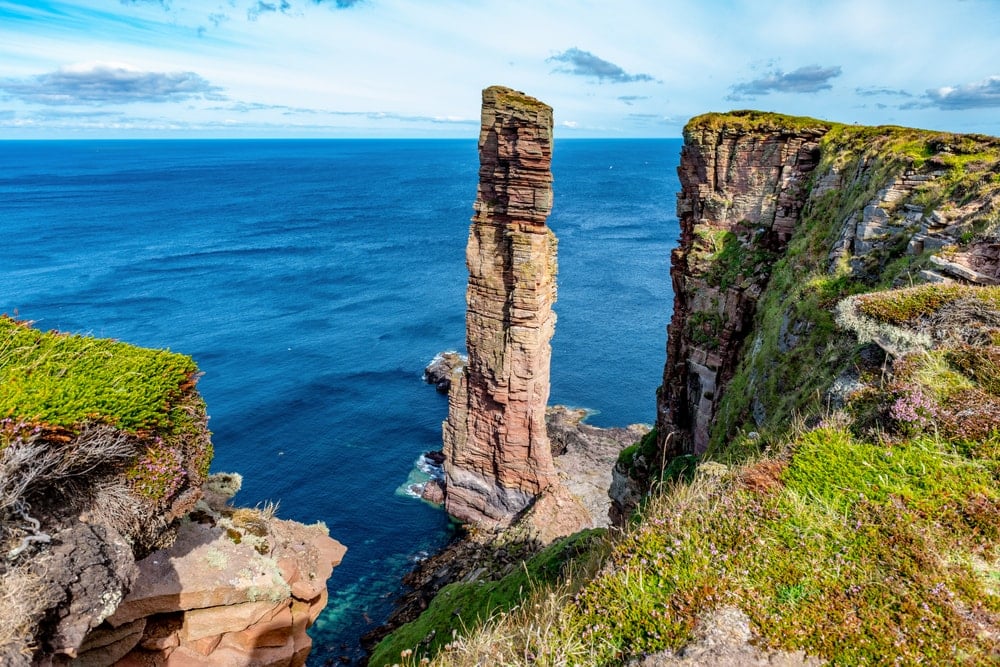
The Old Man of Hoy is a 137m sea stack perched on a plinth of basalt rock. It is one of the tallest in Britain and was created by the erosion of a cliff through hydraulic action sometime after 1750.
The Old Man of Hoy is separated from the mainland by a 60m chasm strewn with debris. It comprises layers of soft sandstone and harder flagstones of Old Red Sandstone, giving the sides a notched, slab-like profile. The stack is no more than a few hundred years old and may soon collapse into the sea.
Find out more about the Old Man of Hoy
Old Man of Storr
Location: Trotternish Peninsula, Isle of Skye, Scotland
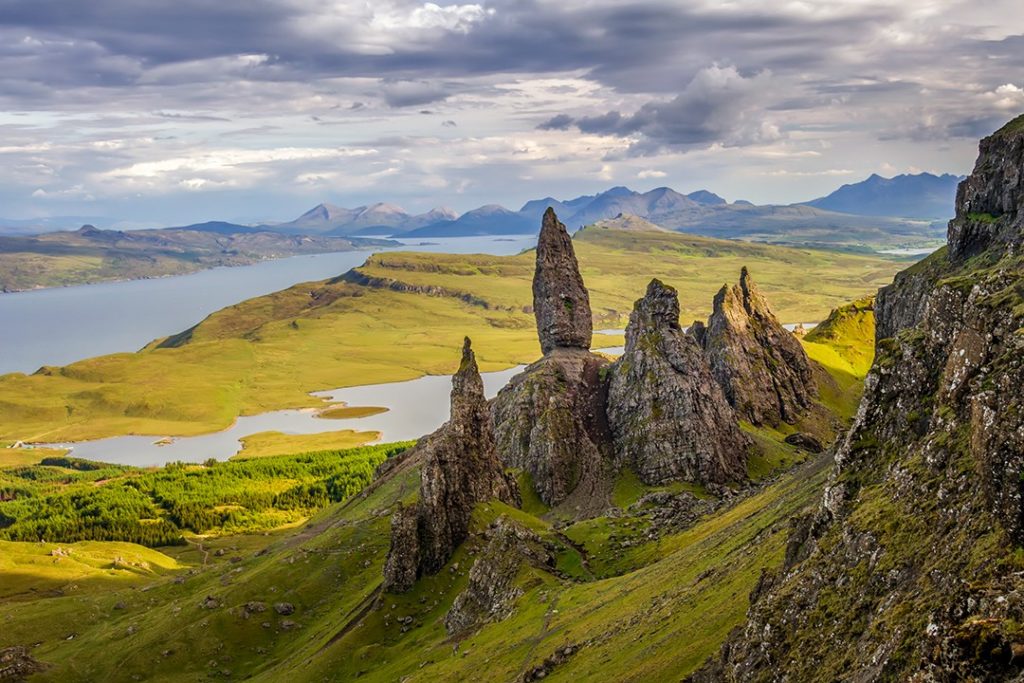
The Old Man of Storr is a striking rock pinnacle that stands 50m high. Part of the Trotternish Ridge, the Storr was created by a massive ancient landslide. The area in front of the cliffs is dotted with oddly-shaped rock pinnacles, creating one of the most photographed landscapes in the UK.
The Old Man of Storr has featured in a number of cultural works, most notably Ridley Scott’s 2012 film Prometheus, which features the pinnacle in some of its opening scenes.
Find out more about the Old Man of Storr
Glyder Fawr
Location: Snowdonia, Wales
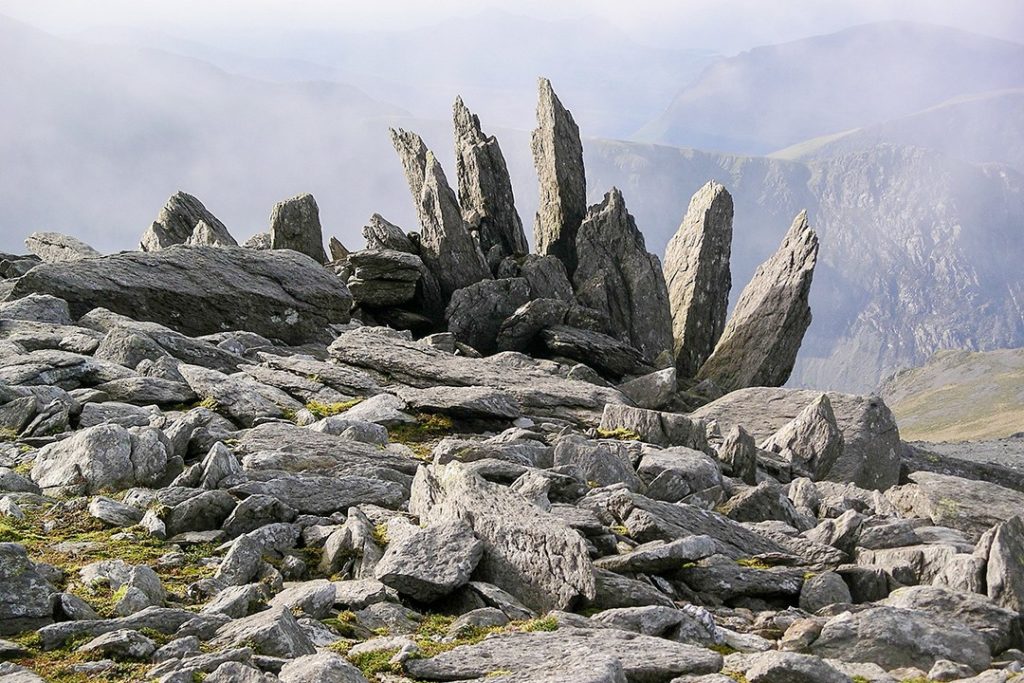
At just over 1,000m, Glyder Fawr is the highest peak in the Glyderau range of Snowdonia. The range was formed about five hundred million years ago when two landmasses collided, causing the Snowdonia massif to rise up.
This rocky outcrop near the summit of Glyder Fawr is one of numerous striking formations littering the area. Over the ages, wind, water and ice lashed the mountains, causing massive rocks to crash down and form the boulder fields and scree visible today.
Find out more about Glyder Fawr
Devil’s Bridge at Worm’s Head
Location: Swansea, Wales
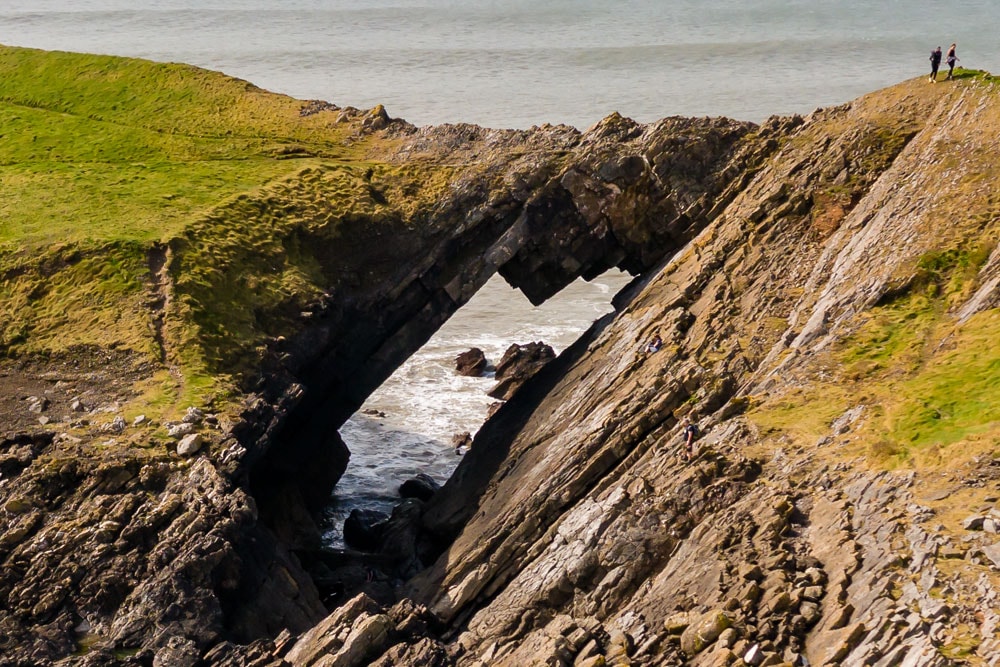
Worm’s Head takes its name from the Old English wurm, meaning ‘dragon’, a reference to its serpentine profile. The mile-long promontory is divided into three sections: the Inner, Middle and Outer Heads. The sections are connected, but the rocky path linking the Inner and Middle Heads can be swamped at high tide.
The canted arch of the Devil’s Bridge is all that remains of a collapsed sea cave and the bridge will eventually collapse too, dividing the Middle Head in two.
Find out more about Worm’s Head
Green Bridge of Wales
Location: Pembrokeshire, Wales
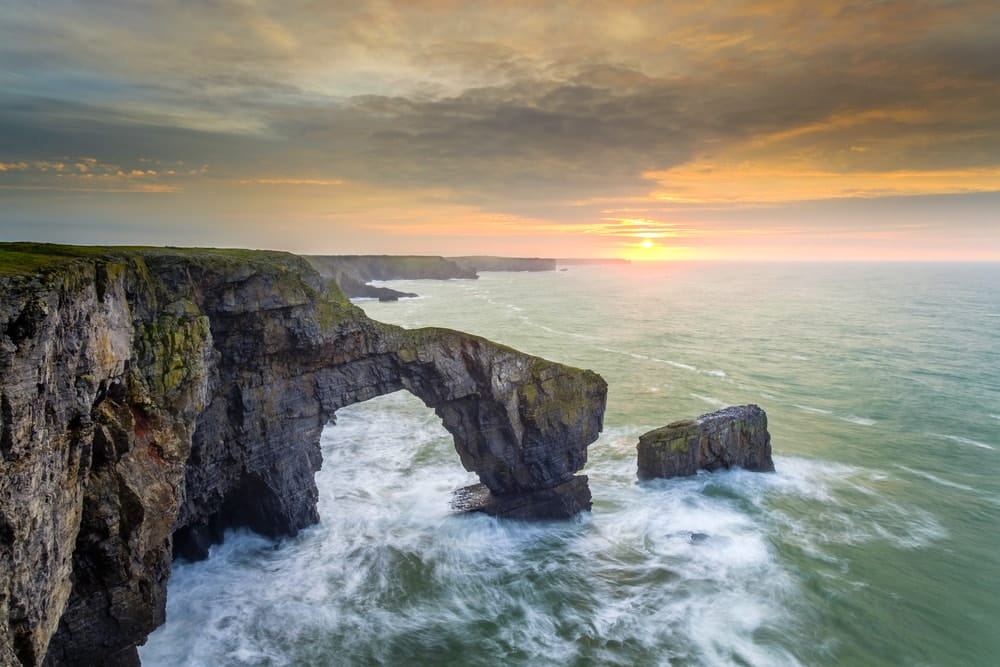
The Green Bridge of Wales is a limestone arch naturally formed by the ebb and flow of the tide. The arch, frequently described as one of the most picturesque natural wonders in the UK, stands roughly 24m high and has a span of 20m.
A layer of vegetation atop the arch gives it the name Green Bridge. Sadly, it is expected that the top of the arch will eventually wear away leaving a stack of rocks in its place.
Find out more about the Green Bridge of Wales and book a stay with the Pembrokeshire hideaways collection
Gough and Inaccessible Islands
Location: Archipelago of Tristan da Cunha, South Atlantic Ocean
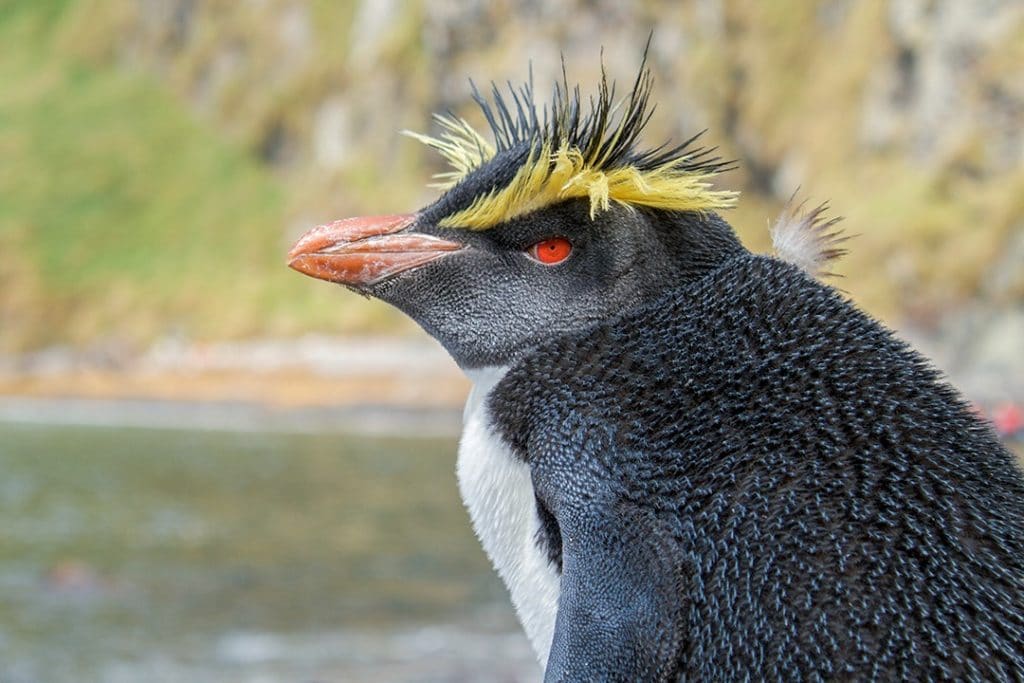
Yes, we know it’s cheating to include this in a list of natural wonders in the UK, but it is listed by UNESCO under the UK’s Natural World Heritage Sites. Gough and Inaccessible Islands in the archipelago of Tristan da Cunha are uninhabited apart from the personnel of a weather station.
The site comprises one of the least-disrupted island and marine ecosystems in the cool temperate zone. They are free of introduced mammals and home to several endemic species of birds and plants, as well large populations of the endangered Northern Rockhopper Penguin.
Find out more about Gough and Inaccessible Islands
Enjoyed this post? pin it for later…
